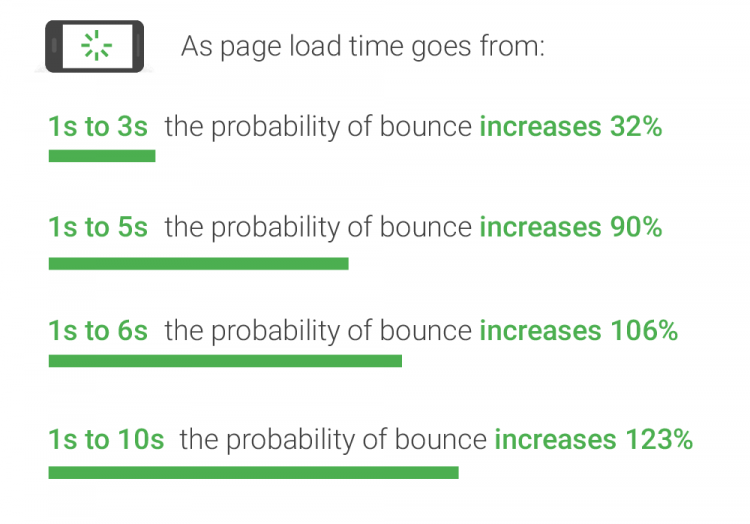The speed of your website is critical in delivering compelling UX in 2018. The hard stats back this up as well, if your page takes too long to load users will simply become frustrated and leave.

Google, in their quest to find perfect webpages, have even started using this as a metric for SEO: ranking fast pages higher and slow pages lower.
Here are the most effective things you can do in 2018 to speed up your WordPress website and provide killer UX.
Caching Plugin
Free plugins such as RocketCache and W3Cache provide caching for actual web pages. This simply means instead of running a lot of PHP code every time a page loads, they save the result locally and serve this instead. This effect has a massive increase on the time it takes to load your page.
When using a caching plugin be sure to play with the settings and test thoroughly to avoid issues and find your optimal setup.
Avoid page builder themes
Page Builder themes are flexible and easy to use, but they come at a cost. The cost is that they generally have to run a lot of code when pages are rendered.
Stop with the plugins!
Similar to page builder themes, each plugin takes a hidden toll on the website. Each plugin on your website makes calls and slows down loading little by little. Keep plugins to an absolute minimum to ensure things work quickly.
Minify files (especially images)
The biggest culprits here are images and videos. Keeping images and videos is to a minimum is the first step you can take, but to help things even more you can “minify them”. When images are saved in various formats such as jpeg or png they are compressed. Techniques can be used to compress these images even more in a way that they might not be already. Various plugins and tools are available for this.
Also ask your developers if they minify their code during development (including HTML, Javascript and CSS). You can also minify these resources on your website through settings on some plugins such as RocketCache. Just be sure to test your changes thoroughly, as minifying these resources can sometimes cause issues.
Find good, reliable hosting
Find a reputable host and ensure they keep up with best practices. Look at what they offer and don’t be afraid to bug their customer service department. Ask them if their server runs services such as GZip compression and http/2. Ask them how often them update Apache and PHP modules.
Remember when it comes to hosting you get what you pay for. If your website is running on a very cheap server it is unlikely to be optimised well.
Use a CDN
A CDN can massively speed up your website by caching resources such as files or images on external servers closer to the user’s location. CDNs can be utilised on your website through plugins or DNS settings. Just be careful! Most CDNs do not provide great coverage in Australia. Many actually cache the resources in Asian servers which slow things down.
As a basic measure, ensure you host videos on YouTube or Vimeo rather than on your own server wherever possible. These websites have been completely optimised to serve these resources extremely fast. Trust their work and take advantage of them where you can.
Try it yourself!
If you’re curious on how well your website is optimised for speed check out the links below! Various services can run speed tests on your website that test how fast your site runs and follows various best practices.
Just be sure to take these metrics with a pinch of salt. A score of 100% is great but often comes with the compromise of other factors such as security or usability.
In other news, we’ve set up our own hosting service: Digital Noir Protect. We’ve taken a lot of time to ensure our hosting runs as fast as possible and will continue to do so in the future. If you’re interested in how we did this or in joining our hosting family, follow the link here or feel free to contact us at either 0435 463 820 or [email protected].
